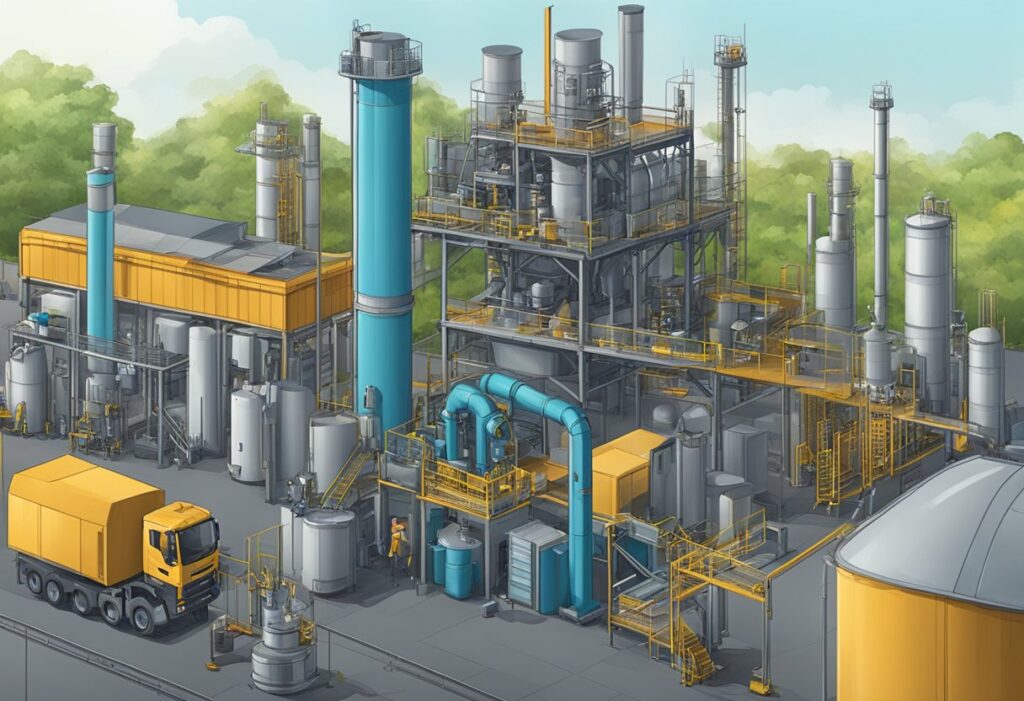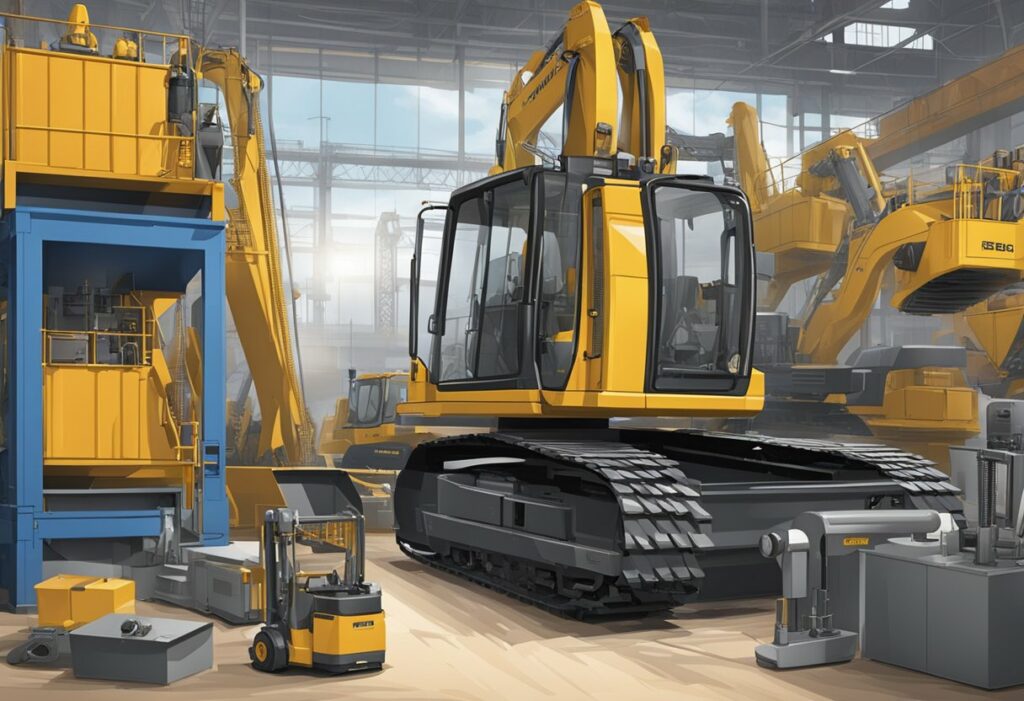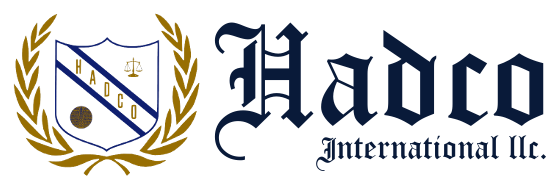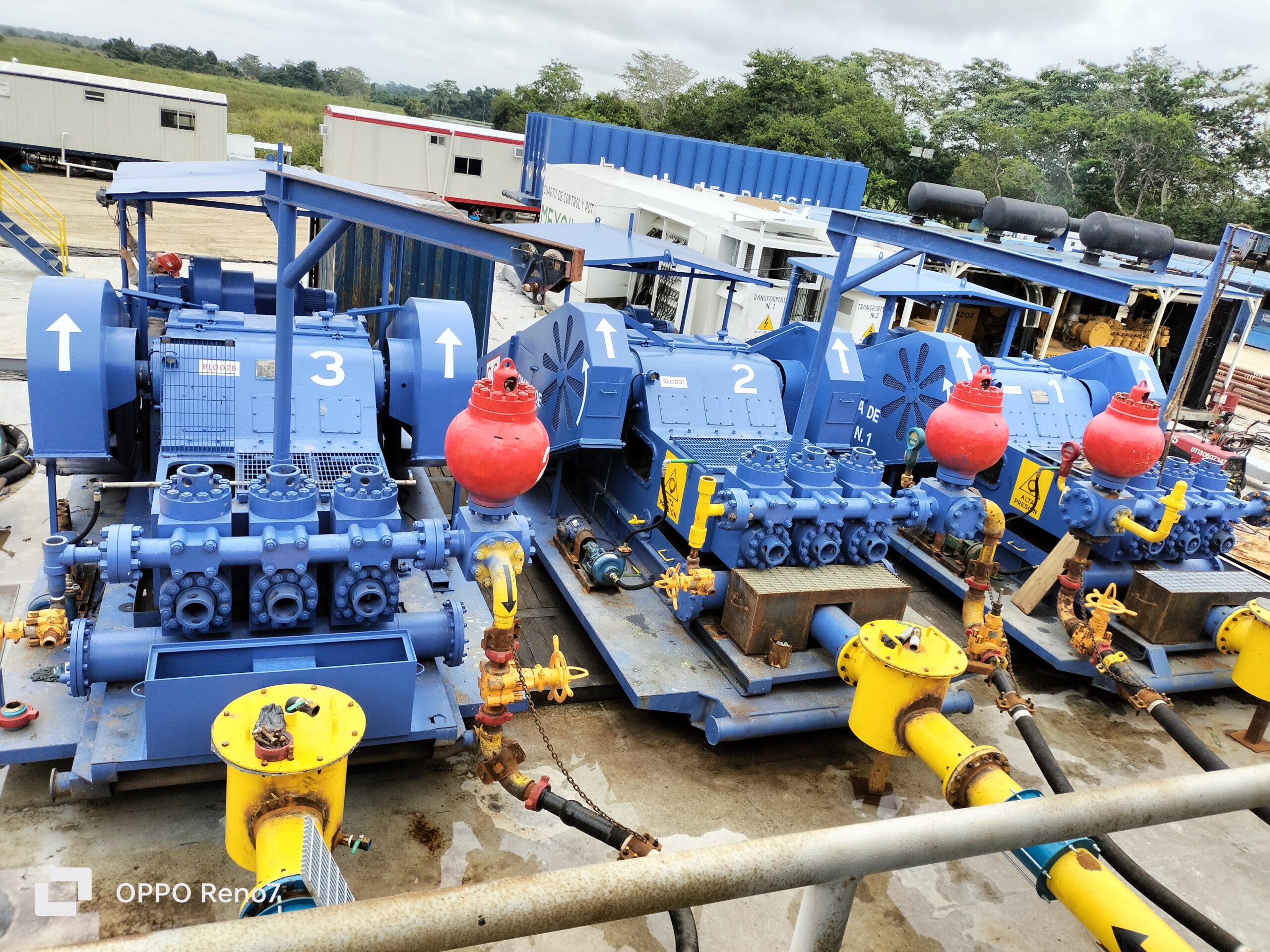Machinery and equipment valuation is a critical process for a range of financial decisions including insurance, lending, and investment. The rapidly evolving landscape of technology and international trade regulations is shaping the way professionals approach this complex task. In today’s market, understanding the current trends and applying the most effective techniques is vital for accurate and defensible valuations.
The demand for precision in machinery and equipment valuation has led to the development of various methodologies, each suited to different situations and asset types. Professional appraisers carefully consider factors like an asset’s condition, market demand, and technological advancements. With an array of specialized tools and software at their disposal, appraisers are equipped to provide insights that uphold industry standards and ethical practices.
Key Takeaways
- Accurate valuations are essential for financial decisions, adapting to new trends and technologies.
- Diverse methodologies are needed to address the unique conditions and market demands of each asset.
- Appraisers must maintain professionalism, employing advanced tools to produce reliable valuations.
Overview of Machinery and Equipment Valuation

When you approach machinery and equipment valuation, you’re engaging with a specialized field that determines the value of tangible assets for a variety of purposes. Professional appraisers base their valuation on methods grounded in sound principles that can accommodate different valuation needs.
Appraisal Basics
To begin, understand that the value of machinery and equipment can fluctuate based on the context—whether it’s for liquidation purposes, continuing operations, or sale of items. Your equipment’s age, condition, and market demand play pivotal roles in its valuation.
Valuation methods primarily include:
- Income: Projects future revenues and discounts them to present value.
- Cost: Considers the replacement or reproduction cost minus depreciation.
- Comparative: Looks at recent sales of comparable items.
Each approach has its place, depending on the machinery or equipment under consideration and the reason for the appraisal.
Appraisers’ Role
Appraisers are specialized professionals who bring objectivity and expertise to the valuation process. Their role is critical in ensuring that machinery and equipment are appraised correctly, using established methodologies.
For financial reporting, insurance, or sale transactions—accurate valuations of machinery and equipment are essential. They provide a basis for making informed decisions and can significantly impact financial outcomes.
You need a meticulous understanding of both current industry trends and individual asset specifications to navigate the nuances of valuation. Adhering to professional standards, appraisers translate complex data into understandable and usable valuations.
The Three Approaches to Value

When you assess the value of machinery and equipment, it’s critical to have a grasp of the three primary valuation approaches: Cost, Income, and Sales Comparison. Each method offers a different perspective on how to ascertain the fair value of an asset based on distinct assumptions and market conditions.
Cost Approach
The Cost Approach values machinery and equipment by determining what it would cost to replace or reproduce the asset. It takes into account the current cost of constructing a similar item and then subtracts any loss in value from age, wear, or technological obsolescence.
- Current Replacement Cost New (CRCN)
- Less: Physical Deterioration
- Less: Functional Obsolescence
- Less: Economic Obsolescence
- Equals: Value under the Cost Approach
This method is often used for unique or specialized equipment without many comparable market transactions.
Income Approach
The Income Approach measures value based on the income an asset is expected to generate over its useful life. For machinery and equipment valuation, this approach is less commonly used due to the challenge in attributing a specific asset’s income generation within a business operation. However, when applicable, it considers the net present value (NPV) of anticipated cash flows.
- Estimate Future Cash Flows
- Determine Discount Rate
- Calculate Net Present Value (NPV)
- Equals: Value under the Income Approach
It can be useful if the equipment contributes directly to a business’s revenue and that contribution can be isolated and measured.
Sales Comparison Approach
Finally, the Sales Comparison Approach values equipment by comparing your item to similar assets that have been sold recently, adjusting for differences in age, condition, and capacity.
- Identify Comparable Sales
- Adjust for Differences
- Weighted Average of Adjusted Sales
- Equals: Value under the Sales Comparison Approach
This method assumes that the market for the equipment is active and that there are enough sales to derive a meaningful comparison. It is often considered the most straightforward method if adequate data is available.
Principles of Valuing Machinery and Equipment
In the realm of machinery and equipment valuation, understanding the core principles is vital for accuracy and credibility. Your knowledge of value types, factors affecting valuation, and depreciation methods is crucial for reliable assessments.
Types of Values
- Fair Market Value: the price at which the equipment would change hands between a willing buyer and seller, neither being under compulsion to buy or sell.
- Liquidation Value: the anticipated price in which an asset will sell in a situation where the sale is under forced or limiting conditions.
- Replacement Cost New: the current cost of replacing an asset with a new one of equivalent utility and function.
- Reproduction Cost New: the cost to create an exact duplicate of the asset, considering materials, design, and other specifications.
- Fair Market Value Severed: the value of a piece of equipment if removed and sold separately from the operating entity.
- Actual Cash Value: the fair market value minus depreciation.
- Salvage Value: the estimated resale value an asset will have at the end of its useful life.
- Scrap Value: the intrinsic value of the metal or material composing the asset when it is no longer usable in its intended form.
Factors Influencing Valuation
- Physical Depreciation: the loss in value from physical wear and tear, age, and exposure to the elements.
- Functional Obsolescence: reduction in usefulness or desirability of an asset due to design, materials, or lack of technology.
- Economic Obsolescence: loss in value resulting from external factors, such as changes in industry demand, legal or environmental regulations.
Understanding these factors plays a critical role in an asset’s valuation, ensuring that your calculations reflect both the asset’s potential and its limitations.
Depreciation Estimation and Forecasting
Straight-Line Method: Divide the asset’s cost by its expected lifespan to calculate annual depreciation. It assumes the asset loses value evenly over time.
Accelerated Depreciation Methods: Such as the Declining Balance or Sum-of-the-Years’ Digits methods, assume that assets lose more value in the earlier years of their useful life.
Forecasting depreciation effectively accounts for the reduction in value over time and helps in determining an asset’s Present Value.
Industry Standards and Certifications
When venturing into machinery and equipment valuation, you’ll encounter various industry standards and certifications. These parameters are crucial for ensuring accuracy, reliability, and consistency within appraisals. They serve as benchmarks for professionals in the field to strive towards and for clients to trust in.
American Society of Appraisers (ASA)
The American Society of Appraisers (ASA) is a leading organization in setting the bar for appraisal standards. By maintaining a rigorous methodology and code of ethics, ASA-accredited members are recognized for their expertise and adherence to professionalism. Specific to machinery and equipment valuation, the ASA offers the comprehensive guide outlined in their publication, “Valuing Machinery and Equipment”. This serves as a key reference for appraisers, ensuring that valuations are conducted with precision and uniformity.
Accreditation Titles
Accredited MTS members, affiliated with the ASA, earn distinct titles that reflect their level of proficiency and experience. The two main accreditation titles you will come across are:
Accredited Senior Appraiser (ASA)
- Requires a minimum of 5 years of full-time appraisal experience
- Must successfully complete appraisal education
- Continuing education is a must to maintain the designation
Accredited Member (AM)
- Requires less experience than ASA
- Must adhere to the same rigorous educational and ethical standards
- Encouraged to pursue ASA level with continued experience and education
As a professional or client involved in machinery and equipment valuation, recognizing these certifications is paramount. Look for these titles when choosing an appraiser, as they signify a commitment to the highest standards within the industry.
Market and Data Analysis
In the landscape of machinery and equipment valuation, understanding market trends and data is crucial. You’ll need to adopt a comprehensive approach to collect and analyze information that affects valuation.
Market Trends
Current Shifts: Be aware that the global machinery sector is experiencing dynamic changes. For instance, the industrial automation sector has seen a steady environment for decades which is now evolving rapidly, leading to opportunities and risks in valuation. You can review specific sector insights through valuable resources like this McKinsey & Company report.
Merger and Acquisition Activity: Keep an eye on merger and acquisition (M&A) trends, as these can significantly impact machinery valuation. The size and volume of deals, for example, have clues about the current health and trajectory of the market. You can learn about the impact of global M&A activity to understand market patterns.
Data Collection
Detailed Record-Keeping: You should gather comprehensive data on assets, including purchase history, maintenance logs, and revenue generation. Data is also akin to physical assets, where its valuation can hinge upon its cost, sale value, or income potential. This Harvard Data Science Review article can provide a deeper understanding of the data valuation approaches.
Sources of Data: Utilize a variety of sources, like transaction databases, industry reports, and market studies. This not only helps in adhering to the market approach in valuation but also ensures that your data is robust and defensible.
Comparative Analysis
Benchmarking Assets: When you compare your machinery against similar equipment in the market, look for benchmarks that closely align with the specifics of your assets. Use the market approach to highlight advantages or restrictions that can affect value.
Adjustments for Comparatives: It is essential to make appropriate adjustments for differences in age, condition, and capacity when comparing assets. Utilize comparisons to established market figures to inform your valuation process, which is not only about knowing where your machinery stands but also understanding how to position it in the market context.
Remember to stay current on valuation trends and bolster your decisions with solid, comparative market data to achieve the most precise valuation possible.
Valuation Methodologies in Practice
In machinery and equipment valuation, the methodologies applied can greatly affect the valuation outcomes. Your choice of method may vary depending on the objective, whether it’s for financial reporting, settling insurance claims, or determining ad valorem taxes.
Valuation for Financial Reporting
For financial reporting purposes, you typically engage in valuations to determine the fair value of machinery and equipment. This involves using approaches like the market approach, which compares your assets to similar items recently sold, or the income approach, forecasting the income the assets will generate. In cases where market and income data are sparse, you may rely on the cost approach which estimates the cost to replace the asset. Valuation techniques must align with standards like the ASC 820-10-35-24A, ensuring consistency and accuracy in your financial statements.
Insurance Valuation
For insurance purposes, the key is to determine the replacement cost new or reproduction cost new. This helps you understand the amount needed to replace the machinery or equipment, in the event of loss or damage. Replacement cost new refers to the cost of acquiring a new item of like kind and quality, while reproduction cost new reflects the cost of recreating a replica with the same materials and specifications. Your insurance valuation helps in mitigating risk and ensuring adequate coverage of your assets.
Ad Valorem Tax Valuation
When dealing with ad valorem tax appraisals, your aim is to establish the taxable value of property within a jurisdiction. This often requires a nuanced understanding of local tax laws and regulations. You may need to assess the value based on its current use, or the income it could potentially generate. The valuation method must be properly documented and justified, as it directly impacts the tax obligations attributable to your machinery and equipment.
Valuation Scenarios and Asset Types
When it comes to the appraisal of machinery and equipment, different scenarios and asset types call for distinct approaches and techniques. Your understanding of these distinctions ensures accurate valuations tailored to each asset’s unique characteristics.
Valuing Technical Assets
There is an intricate process involved in valuing technical assets like manufacturing machinery or laboratory equipment. You’re looking at a combination of market data, the cost of installation, and the asset’s condition and remaining useful life. The American Society of Appraisers provides guidelines on this nuanced approach, particularly useful for complex assets.
Aircraft Appraisal
Aircraft appraisals necessitate a thorough understanding of the aviation market and regulations. Variables such as flight hours, maintenance records, make and model play a critical role. It’s imperative to consider both the physical condition of the aircraft and its historical usage, aligning with industry standards and considering the methods of valuation applied here.
Vehicles and Plant Equipment
Regarding vehicles and plant equipment, market value, depreciation, and operational lifespan are key factors. A well-maintained piece of used equipment can still hold significant value, and here, context is everything. The concept of ‘value to the enterprise’ shines a spotlight on the importance of installation costs that can sometimes eclipse the equipment’s price itself, as noted by SobelCo. It’s a delicate balance between objective data and the subjective nuances of each asset.
The Valuation Report
The valuation report is a critical document that outlines the findings of an appraisal. It is essential for conveying the value of machinery and equipment in a manner that is understandable and defensible.
Structure
When structuring your valuation report, it’s important to start with a clear and concise executive summary that encapsulates the main findings. A standard report often contains the following key elements:
- Introduction: Briefly states the purpose and the subject of the valuation.
- Scope of Work: Describes the extent of the research and analysis conducted.
- Methodology: Outlines the approaches used, such as the income, cost, or market approach.
- Certification and Signature: Includes a formal statement by the appraiser and their signature.
- Attachments/Annexes: Any supporting documents or additional information referenced in the report.
Each section should contain headers and subheaders for ease of navigation.
Writing Techniques
Writing a valuation report requires clarity and precision. Use direct, straightforward language to ensure that your points are easily understood. As you assess and detail the value of machinery and equipment, it’s crucial to:
- Present data in a logical order that follows the valuation process.
- Utilize tables and bullet points to clearly display data and findings.
- Highlight important figures or conclusions with bold or italic formatting to draw attention.
- Avoid technical jargon unless it is explained or widely understood within the industry.
Legal and Ethical Considerations
Adherence to ethical standards and legal requirements is non-negotiable in appraisal report writing. Here are some points you must consider:
- Always base your appraisals on accurate and current data, providing a true representation of the equipment’s value.
- Conflict of interest should be disclosed upfront in the report.
- Ensure that your appraisal practice complies with the Uniform Standards of Professional Appraisal Practice (USPAP) and other relevant guidelines.
- Maintain client confidentiality and use discretion in handling sensitive information.
By incorporating these elements, your valuation report will not only meet professional standards but also become a reliable document for all stakeholders involved.
Education and Resources
In the rapidly evolving field of machinery and equipment valuation, enhancing your knowledge and skill set is crucial. You can rely on authoritative textbooks and tailored training courses to stay updated and maintain proficiency in the latest valuation techniques.
Textbooks and Publications
Your expertise in machinery and equipment appraisal is enriched through comprehensive textbooks, such as Valuing Machinery and Equipment: The Fundamentals of Appraising Machinery and Technical Assets. These publications are often considered required reading for professionals in the field. They provide a thorough survey of both principles and practical applications pertinent to current market conditions.
New editions of these textbooks reflect the dynamic nature of the industry, incorporating revised chapters to include modern appraisal report writing and sales comparison approaches. These resources are essential for anyone seeking to deliver accurate and reliable valuations.
Training Courses and Certifications
When you want to advance your career with specialized training, look for courses like the Machinery & Equipment Valuation Methodology (OnDemand). Such courses are designed to cater to a wide course audience, encompassing beginners and seasoned appraisers alike.
The instructional methods vary from online self-study modules to interactive workshops, all structured to match your learning level and schedule. Upon completion of these courses, you typically receive a certificate of completion, and they may qualify for continuing education credits or contact hours required to maintain certification in your professional field. These programs ensure that you gain both theoretical understanding and practical proficiency, essential for conducting competent valuations.
Tools and Software for Appraisers
In your career as a machinery and equipment appraiser, employing the right set of tools and software is crucial for effective and efficient valuation. Your toolbox should include a range of applications tailored for various aspects of the appraisal process.
Appraisal Software:
- Valuation Platforms: Look for comprehensive software solutions that facilitate appraisal projects from start to finish. Your choice should support cost, market, and income approaches to value.
- Data Analysis Tools: Software with strong data analysis capabilities can help you interpret market trends and assess valuation parameters accurately.
- Report Generators: Opt for platforms that streamline the reporting process, offering templates and customization options for your appraisal reports.
Digital Tools:
- Mobile Apps: Use mobile apps for field inspections to capture data, take photographs, and make notes on the go.
- Databases for Comparables: Subscribe to databases that provide access to a wide range of comparable sales data for different types of machinery and equipment.
- Safety Checklists: Digital safety checklists ensure that you adhere to best practices during onsite inspections.
Tip: Embrace tools that integrate with emerging technologies such as AI to enhance the precision of your valuations.
Your Selection Criteria
When choosing your software and tools, prioritize:
- Reliability: Choose established tools with positive reviews from other appraisers.
- Usability: User-friendly interfaces save time and avoid frustration.
- Support: Ensure good customer support is available for any technical issues you might encounter.
Remember, the right software can significantly impact the quality and efficiency of your valuation services.
Professional Responsibilities and Ethics
When engaging in the valuation of machinery and equipment, your adherence to a strict Code of Ethics is paramount. This code provides guidelines that ensure your services are conducted with integrity, objectivity, and professionalism. As you conduct appraisals, it’s vital to bear in mind the following principles:
- Honesty: present a truthful analysis based on reliable data
- Confidentiality: safeguard the privacy of your clients’ information
- Competence: maintain a high level of expertise through ongoing education
- Impartiality: assess values without bias or vested interest
Your professional responsibilities also extend to competency in your field, especially given the technical nature of machinery and equipment appraisal. It is your duty to accurately identify and determine the condition, usefulness, and value of assets, which requires up-to-date knowledge of industry trends and valuation methodologies.
Additionally, maintain transparent relationships with all stakeholders. If you happen to be involved in a situation where there are conflicting interests, it is your ethical responsibility to disclose such conflicts to all affected parties.
The evolving landscape demands your awareness of the environmental impact of assets you’re appraising. In line with the European valuation standards, consider factors such as energy efficiency which can significantly affect an asset’s valuation.
Remember, as an appraiser, your professional conduct not only shapes your reputation but also upholds the trust in the valuation profession as a whole.
Conclusion and Future Outlook
The landscape of machinery and equipment valuation is evolving rapidly, driven by technological advances and emerging trends. As you navigate the future, understanding the significance of these developments is key.
Digitalization is the cornerstone transforming the machinery sector. Your future success may hinge on how effectively you integrate digital tools into valuation practices. Advanced technologies, such as AI and IoT, will likely become standard in assessing and forecasting value.
You can anticipate a greater emphasis on sustainability, with a push toward energy-efficient machinery. Also, expect regulatory changes to influence the valuation process, making it more standardized and transparent.
Equipment valuation methodologies are bound to get more sophisticated. Prepare for the integration of real-time data analytics, which will provide you with more accurate and timely valuations. Embrace these changes to maintain a competitive edge.
Stay informed on the trends like the digital twin technology and continuous development within industrial automation to make informed decisions for your strategic investments.
Remember, these evolutions are not just challenges but opportunities. Equip yourself with the latest knowledge, and be adaptive to change to leverage the full potential of the latest valuation techniques. Your proactive approach will be instrumental in shaping a resilient and lucrative future in machinery and equipment valuation.
Frequently Asked Questions
Valuing machinery and equipment is a complex process influenced by various factors, and understanding the current approaches and evolving methodologies can help you make informed decisions.
What are the standard approaches to valuing machinery and equipment?
You’ll typically encounter three primary methods: the cost approach, market approach, and income approach. Each provides a different perspective on value, accounting for the asset’s replacement cost, comparable sales, and the income it’s expected to generate, respectively.
How has the methodology for equipment appraisal evolved in recent years?
Recent advancements have brought to the forefront technology-driven appraisal techniques, such as the use of big data analytics to aid in the market approach and the incorporation of modern depreciation models for a more accurate cost approach.
Can you outline the key factors that affect the valuation of used machinery?
The value of used machinery is influenced by its age and condition, technological obsolescence, market demand, and brand reputation. Moreover, the equipment’s maintenance and service history play a critical role in defining its worth.
What techniques are utilized for determining the value of specialized plant equipment?
Specialized plant equipment often requires a blended valuation approach, which might include a detailed analysis of replacement cost, potential earnings, and a careful examination of the secondary market to establish a fair market value.
How do depreciation and obsolescence impact the valuation of industrial assets?
Depreciation decreases the value of industrial assets over time based on wear and tear, while obsolescence takes into account outmoded technology or processes that affect the asset’s desirability in the current market.
What resources are available for accurately calculating the value of used equipment?
Resources for accurate calculation include industry databases, auction result compilations, and professional appraisals leveraging various methodologies to capture the most precise value of equipment.

